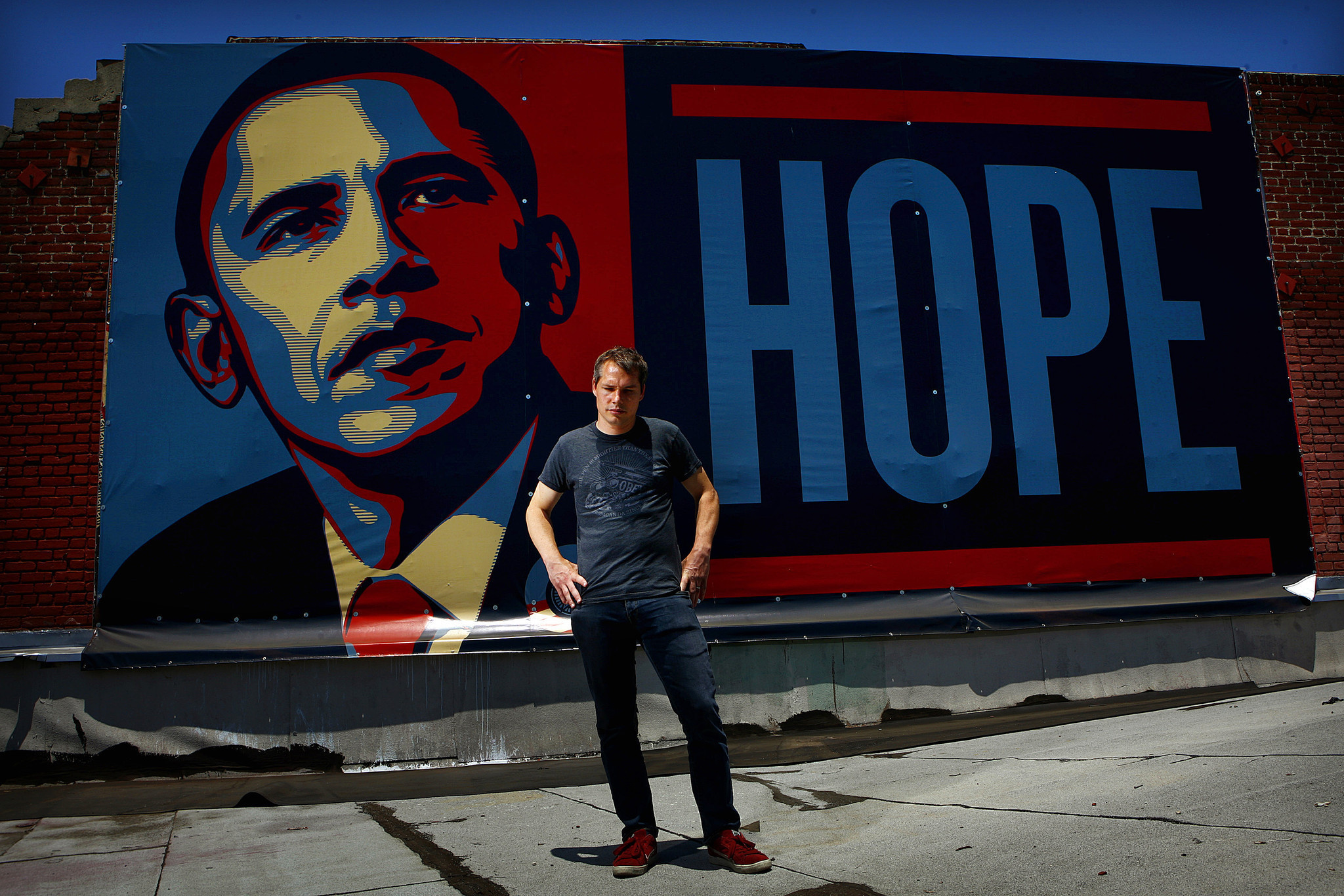
Even famous artists can still face criminal charges for their acts despite their reputations. Most popular for his iconic Obama “Hope” poster, world-renowned street artist Shepard Fairey was arrested earlier this year on a felony charge in Detroit for tagging several buildings. In July of 2015, he was arraigned on two counts of destruction of property.
According to the authorities, Fairey caused about $9,000 in malicious damage to these structures while he was visiting the city of Detroit to complete commissioned works, like painting a 184-foot by 60 foot mural and six smaller works in an art-filled alley. Prosecutor Douglas Baker said Fairey painted his well-known Andre the Giant tag on multiple buildings, and Detroit authorities reported that fourteen buildings and structures were vandalized in total, including two city-owned properties. In the following days, Fairey’s lawyers entered a not guilty plea on his behalf, and he was released form jail with the bond set at $75,000. Further prosecution dates have not yet been set, but the penalty charges against Fairey are threatened of serving up to five years in jail if prosecuted.
Baker stated, “The view is no one cares and they can get away with it here when they wouldn’t in their own community. In some ways [we’re hoping for] a changing of the view or mentality of some people… They think they can come in and dump their old refuses, or tires, or cars; people think that they can come in and tag buildings… just another layer in the struggle against crime.”
Baker’s statement appears to be the majority view of the public; many people believe that Fairey’s actions should not be condoned just because he is a well-known graffiti artist. This viewpoint is further explained by Detroit police Officer Dan Donakowski. He states, “If you don’t have permission, it’s generally labeled graffiti ad we will prosecute.” According to Detroit police, Fairey allegedly put up posters on private and government property, causing significant property damage to the buildings.
This Detroit arrest is only the most recent of allegations that threatened Fairey with jail time, either. In 2009, he was arrested in Boston on charges related to illegal tagging. The arrest occurred about around the same time of his exhibition at the Institute of Contemporary Art/Boston.
Fairey’s arrest, and release, provides a window into the evolution of street art and its growing acceptance in American culture. The old question, “Is it art or is it vandalism?” is now getting answered through new eyes. The attention that the Detroit incident received speaks not only to the artist’s fame, but also to the categorization of street art as public art.
The commercialization of this kind of art, from advertising, films, and even in fashion, makes street art more accessible than ever to the general public, and yet it also raises questions about its authenticity. Street art was created as a way to rebel against authority in a way that embodied the spirit and lifestyle of the “punk rock” scene. Nowadays, however, it is not difficult to wonder if the popularity and commercialization of this art dilutes its street cred and authenticity. However, some artists do not believe that street art is being changed by its commercialization; they believe that street art is so resilient that the corporatization of it does not threaten its roots as a “from-the-ground-up” art form.
Many artists have attempted to balance the opposing forces between commerciality and authenticity of street art by doing both legal and illegal work, much like Fairey has done. Nevertheless, artists like Fairey are the forerunners of street art- it is up to them to decide where they want to guide street art. Does Fairey want to upkeep the adrenaline rush of doing something illegal, of putting something up and getting away with it? Or does he want to bring street art into a more legitimate realm, where it can be considered fine art? Both sides of art have positive and negative features, but the one similarity both contain is that art is for public consumption, no matter what. Whatever Fairey and other artists following in his path, choose, they must fully commit themselves to these roles.







